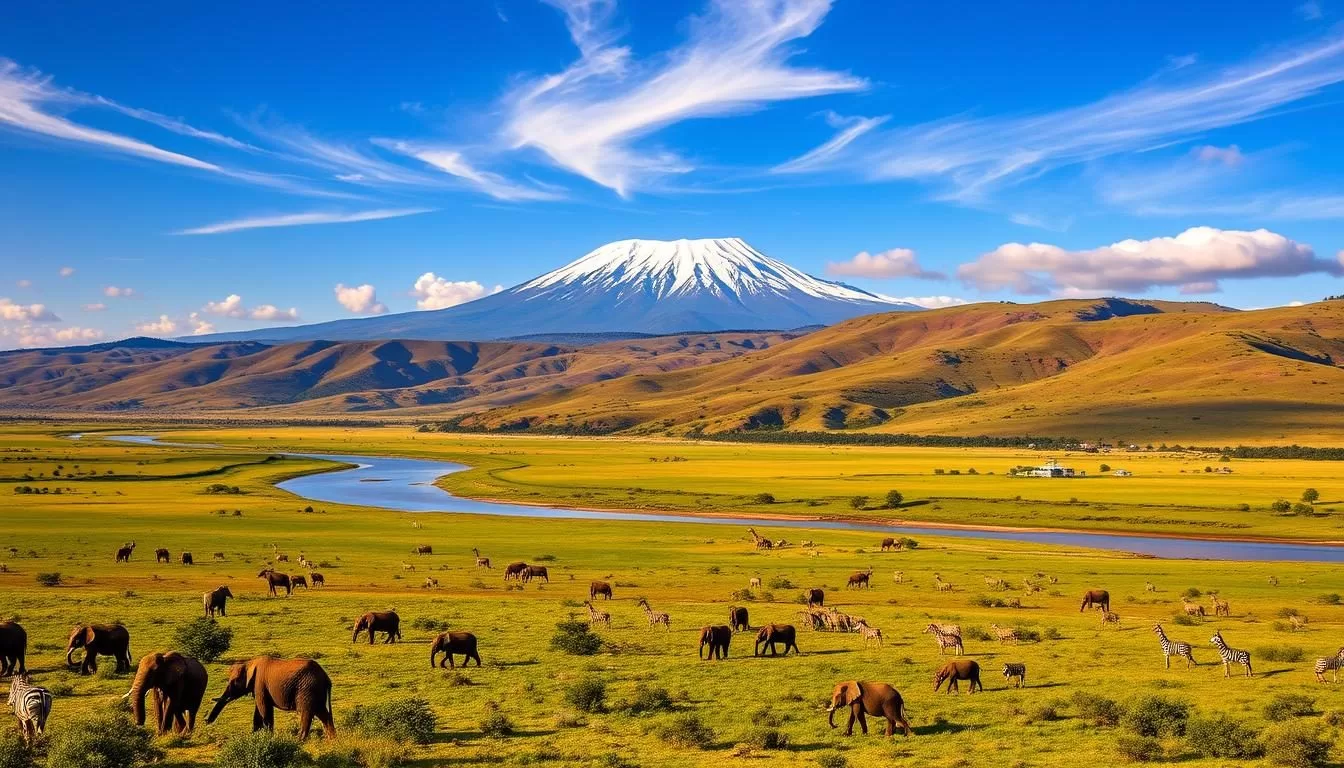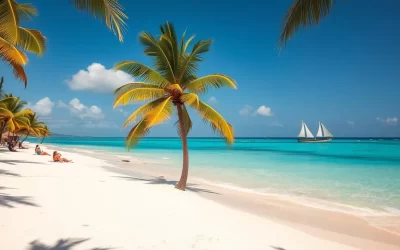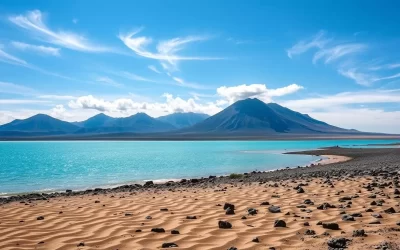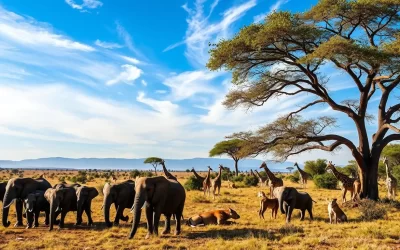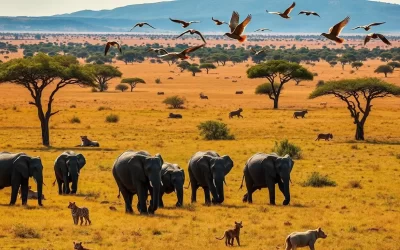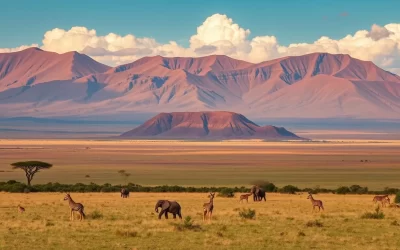Planning a trip to Kenya can be challenging due to its diverse landscapes and climate zones. From the warm coastlines along the Indian Ocean to the arid savannahs and snow-capped mountains, each region has its unique weather patterns.
Understanding the climate variations is crucial to making the most of your trip. The country’s weather is generally divided into rainy and dry seasons, with the mountainous regions experiencing four distinct seasons. Timing is everything when it comes to witnessing the spectacular Great Migration or enjoying lush landscapes with fewer tourists.
By choosing the right time to visit Kenya, you can optimize your travel experience. Whether you’re looking for ideal wildlife viewing conditions or prefer to avoid the crowds, this guide will help you navigate Kenya’s regional climate variations and plan your trip accordingly.
Understanding Kenya’s Diverse Climate Patterns
Kenya’s climate is as diverse as its landscapes, ranging from the humid coastal regions to the cool highlands. This diversity is influenced by various factors, including monsoon winds and the country’s topography.
From Coastal Humidity to Highland Coolness
The climate in Kenya varies significantly across different regions. The coastal areas are generally humid and warm, while the highlands are cool and temperate. This variation creates distinct climate zones, each with its unique characteristics.
Monsoon Winds and Their Impact on Weather
Monsoon winds play a crucial role in shaping Kenya’s climate. The northeast monsoon (Kaskazi) brings drier conditions from December to March, while the southeast monsoon (Kuzi) influences the April to November period. These wind patterns interact with Kenya’s topography to create predictable rainfall patterns.
| Season | Months | Characteristics |
|---|---|---|
| Long Rains | April to June | Heavy rainfall, intense but brief rainstorms |
| Short Rains | November to December | Shorter period of rainfall |
| Dry Season | July to October, December to March | Dry conditions, cool in July to October, hot in December to March |
Kenya: Best Months for a Weather-Savvy Trip
To make the most of your Kenyan adventure, it’s crucial to understand the country’s seasonal weather patterns. Kenya’s climate varies significantly across different regions, making some months more suitable for certain activities than others.
June to October: Prime Dry Season
The dry season, spanning from June to October, is considered the prime time for a Kenyan safari. During these months, the weather is generally dry and cool, with comfortable temperatures, making it ideal for wildlife viewing. The dry conditions concentrate animals around water sources, increasing the chances of spotting a variety of species. With average temperatures ranging from the mid-70s to mid-80s Fahrenheit (23-30°C), this period is perfect for exploring Kenya’s outdoors, whether you’re on a safari or hiking.

January to February: The Second Dry Season
January and February offer an excellent alternative to the main dry season, with hot, sunny days and minimal rainfall creating favorable conditions for wildlife viewing. This period is a sweet spot between the short rains (ending in December) and the long rains (beginning in March), providing a reliable window for safari adventures. You’ll experience higher temperatures during these months, averaging around 80°F (27°C) during the day, which can lead to different wildlife viewing patterns compared to the cooler June-October period. With fewer tourists than the peak July-September period, you may enjoy a more intimate safari experience.
Regional Weather Guide: When to Visit Where
Kenya’s climate varies greatly from one region to another, making it essential to know when to visit where. The country’s diverse geography results in different weather patterns across various regions.
Nairobi and the Central Highlands
Nairobi, the capital city, and the Central Highlands experience a temperate climate due to their high altitude. Temperatures are generally mild, ranging from 50°F to 75°F (10°C to 24°C). The best time to visit Nairobi is during the dry seasons, from June to October and January to February, when conditions are most favorable for outdoor activities.
Mombasa and the Coastal Region
Mombasa and the coastal areas have a tropical climate, characterized by high temperatures and humidity throughout the year. The coastal region experiences a hot month during the peak summer season. Visiting during the dry seasons (June to October and January to February) is advisable for a more pleasant experience.
Northern Kenya’s Arid Landscapes
Northern Kenya is characterized by arid landscapes with limited water resources and extreme temperatures, often reaching 97°F (36°C). The region’s wildlife has adapted to these harsh conditions. The best time to visit this region is during the southern hemisphere winter (June through August), when temperatures are relatively cooler.
| Region | Best Time to Visit | Weather Conditions |
|---|---|---|
| Nairobi and Central Highlands | June to October, January to February | Mild temperatures, dry |
| Mombasa and Coastal Region | June to October, January to February | Hot, humid |
| Northern Kenya | June to August | Hot, dry, cooler in the winter months |
Wildlife Viewing: Timing Your Safari Adventure
Kenya offers a range of wildlife viewing experiences, with the timing of your visit being key to a successful safari. The country’s diverse wildlife and varied landscapes make it an ideal destination for safari enthusiasts.
The Great Migration: July to October
The Great Migration is one of Kenya’s most spectacular wildlife events, occurring from July to October. During this period, millions of wildebeest, zebras, and gazelles migrate to the Maasai Mara in search of greener pastures. This event offers unparalleled wildlife viewing opportunities, with large herds and predators like lions and leopards in abundance.
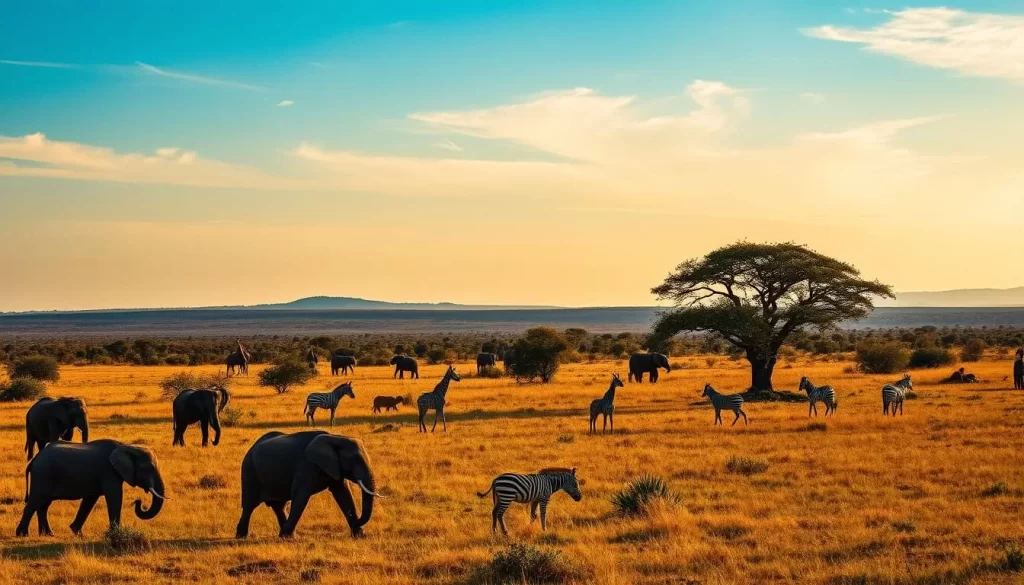
Wildlife Viewing in Other Seasons
While the Great Migration is a highlight, Kenya’s wildlife can be enjoyed throughout the year. From November to May, the wet season brings lush landscapes and an increase in newborn animals. This period is ideal for spotting migratory birds and enjoying lower rates at safari lodges. Additionally, certain parks like Amboseli and Tsavo offer excellent viewing of elephants and other animals year-round, particularly around water sources during the dry season.
- Discover unique wildlife viewing opportunities outside the Great Migration.
- Enjoy lush landscapes and fewer tourists during the green season.
- Experience exceptional bird-watching from November to April.
Rainy Seasons: Should You Visit or Avoid?
The rainy seasons in Kenya are often viewed with skepticism, yet they offer unique opportunities for the savvy traveler. Understanding the characteristics of these seasons can help you plan a more rewarding trip.
Long Rains: March to May
The long rains, spanning from March to May, significantly impact Kenya’s landscape and climate. During this period, some areas become inaccessible due to heavy rain and flooding. However, the showers also bring life to the vegetation, making the country look lush and green.
Short Rains: November to December
The short rains, occurring from November to December, offer a strategic compromise for travelers. You can expect brief afternoon showers followed by sunshine, rather than continuous downpours. This “green season” creates spectacular photographic opportunities with dramatic storm clouds and lush landscapes. Key benefits include:
- Excellent birdwatching due to the arrival of migratory birds from Europe and Asia.
- Shoulder season rates at many lodges and camps, offering excellent value for your trip.
- Minimal disruption to animal viewing, making it ideal for safari enthusiasts.
Beach Vacations: Best Months for Coastal Kenya
Kenya’s coastal region is a paradise for beach lovers, with its pristine beaches and warm weather. The best time to visit Kenya’s beaches depends on your preferences, but generally, there are two prime periods for a beach vacation.
July to August: Perfect Beach Weather
During July and August, Kenya’s coastal region experiences perfect beach weather. The dry season ensures minimal rainfall, making it ideal for beach activities. You can enjoy calm ocean conditions and pleasant temperatures, making it a great time for swimming, snorkeling, or simply relaxing on the beach.
December to March: Hot but Pleasant
From December to March, Kenya’s coastal region enjoys its second prime beach season. Hot temperatures characterize this period, but the weather remains pleasant, with average temperatures between 77°F and 82°F during the day. The sunniest time of the year, this period is perfect for sun-seekers. Here’s a comparison of the two periods:
| Period | Weather | Temperature | Beach Conditions |
|---|---|---|---|
| July to August | Dry, minimal rainfall | Pleasant | Calm |
| December to March | Hot, sunny | 77°F – 82°F | Generally calm |
Both periods offer a great beach vacation experience, with the December holiday period bringing a festive atmosphere to coastal resorts. You can enjoy Christmas and New Year celebrations, creating a lively environment popular with both international and domestic tourists.
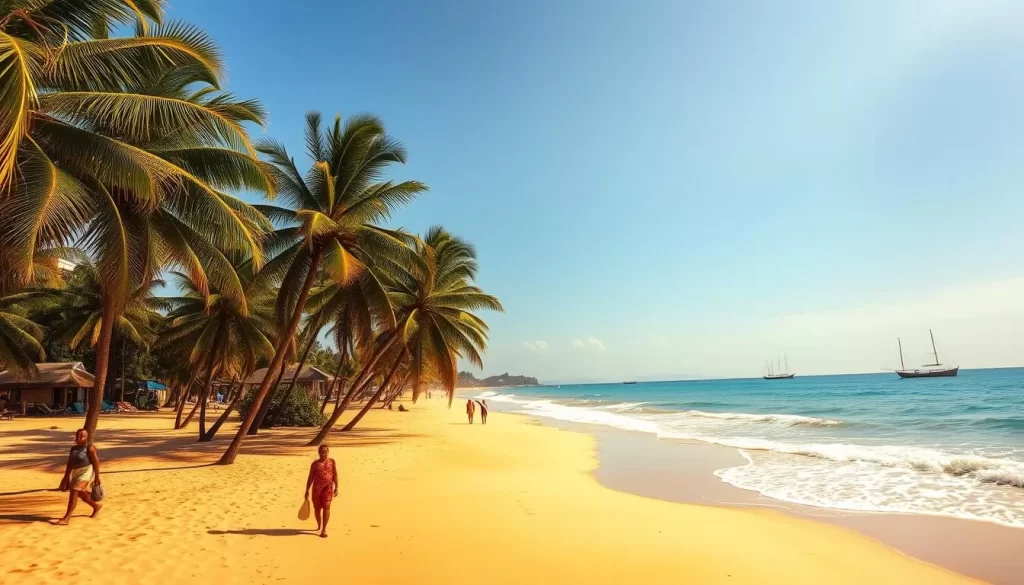
Month-by-Month Weather Breakdown
To make the most of your Kenyan adventure, it’s essential to grasp the country’s monthly weather fluctuations. This breakdown will help you understand the seasonal changes and plan accordingly.
January to June: From Dry Heat to Long Rains
The first half of the year in Kenya is marked by a transition from dry heat to the long rainy season. January and February are characterized by dry conditions, ideal for wildlife viewing. As the months progress, temperatures rise, and March signals the beginning of the long rains, which continue through May. By June, the rain starts to subside, leaving the landscape lush and green. You can expect occasional showers during these months, with the frequency and intensity varying by region.
July to December: From Cool Dry to Short Rains
The second half of the year offers more predictable weather patterns. July to September is cool and dry, making it peak season for safaris. As October approaches, temperatures warm up, and the short rains begin toward the end of the month. November and December see an increase in rainfall, but the rain is often followed by sunshine, creating dramatic skies. This period is excellent for spotting migratory birds and witnessing the wildebeest migration. You can enjoy Kenya’s natural beauty during these months, with the added benefit of fewer tourists in November.
What to Pack for Different Seasons
As you prepare for your trip to Kenya, knowing what essentials to pack for the prevailing season will greatly enhance your travel experience.
Dry Season Essentials
During the dry season, you’ll want to pack light, breathable clothing and protective gear like sunscreen and sunglasses. Comfortable walking shoes are a must for safaris and exploring. Don’t forget a hat and lip balm with SPF.
Rainy Season Must-Haves
The rainy season in Kenya, which occurs from March to May and November to December, requires a different packing list. You’ll need waterproof gear, including a reliable rain jacket and water-resistant pants. Quick-drying fabrics are also essential to keep you comfortable during this time. Consider packing umbrellas, plastic bags for electronics, and anti-fungal powder to keep your belongings dry.
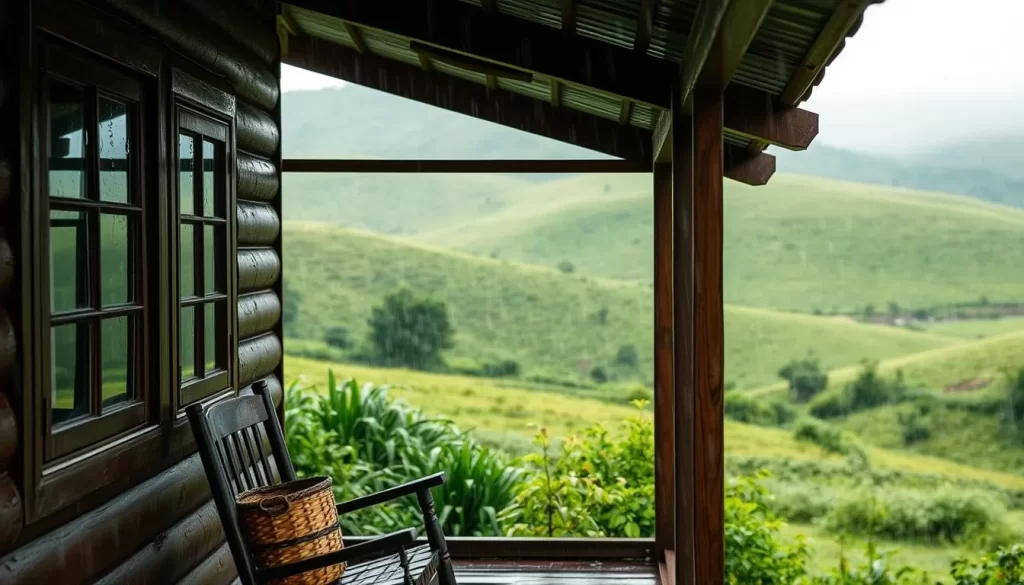
Special Considerations for Popular Activities
The diverse landscapes and cultures of Kenya provide numerous opportunities for adventure and cultural immersion, but timing is key to a fulfilling experience. Whether you’re planning to conquer the peaks or immerse yourself in local traditions, understanding the best time for your chosen activities is crucial.
Mountain Climbing and Hiking
For peak hiking and climbing experiences, consider the dry seasons, which typically offer clearer trails and more favorable weather conditions. This makes your adventure safer and more enjoyable. Planning your visit during these periods can significantly enhance your overall experience in Kenya’s beautiful landscapes.
Cultural Festivals and Events
Nairobi is home to a vibrant cultural scene, with events like the Madaraka Day festival and the Kenya Music Festival happening throughout the year. When you visit Kenya, you can explore various destinations that host unique cultural festivals, such as the Lamu Cultural Festival and Mombasa Carnival, enriching your travel experience. Incorporating these events into your itinerary can provide deeper insights into Kenya’s heritage.
Conclusion: Planning Your Weather-Perfect Kenya Trip
Embracing Kenya’s seasonal rhythms can lead to a more authentic and rewarding travel experience, tailored to your interests and preferences. By understanding the country’s diverse climate patterns, you can plan a trip that balances optimal weather conditions with your specific interests and budget. Whether you’re looking for a safari adventure during the dry season or a relaxing beach vacation, Kenya has something to offer throughout the year. The best time to visit depends on your priorities, making it essential to choose the right season for your activities, such as witnessing the Great Migration in Maasai Mara.
The above is subject to change.
Check back often to TRAVEL.COM for the latest travel tips and deals.
Here are some Tours & Sightseeing suggestions that might pique your interests!
